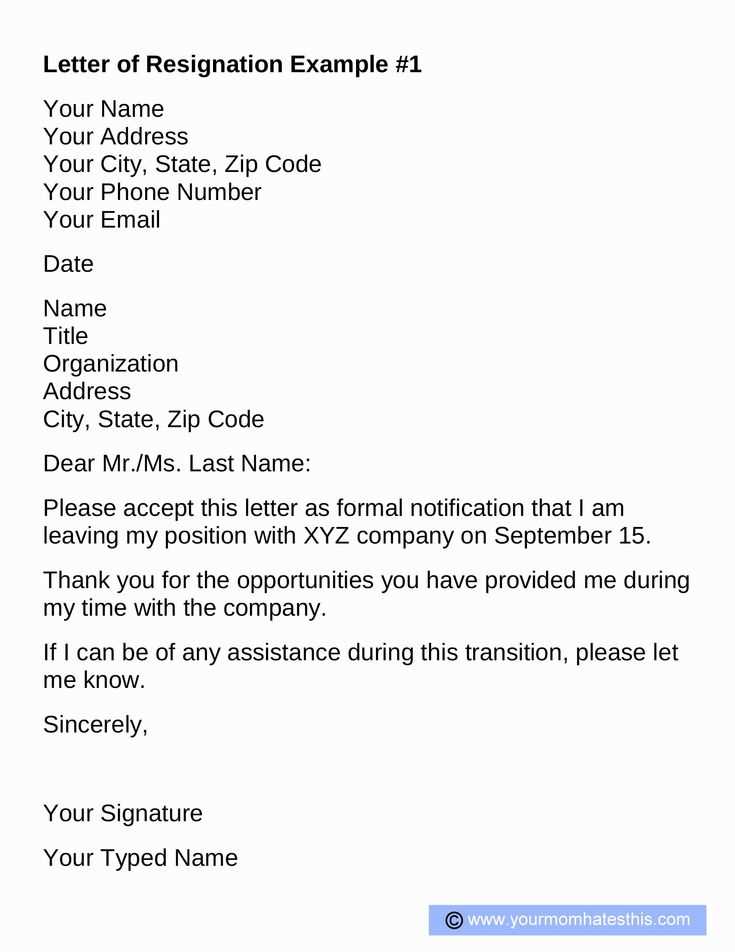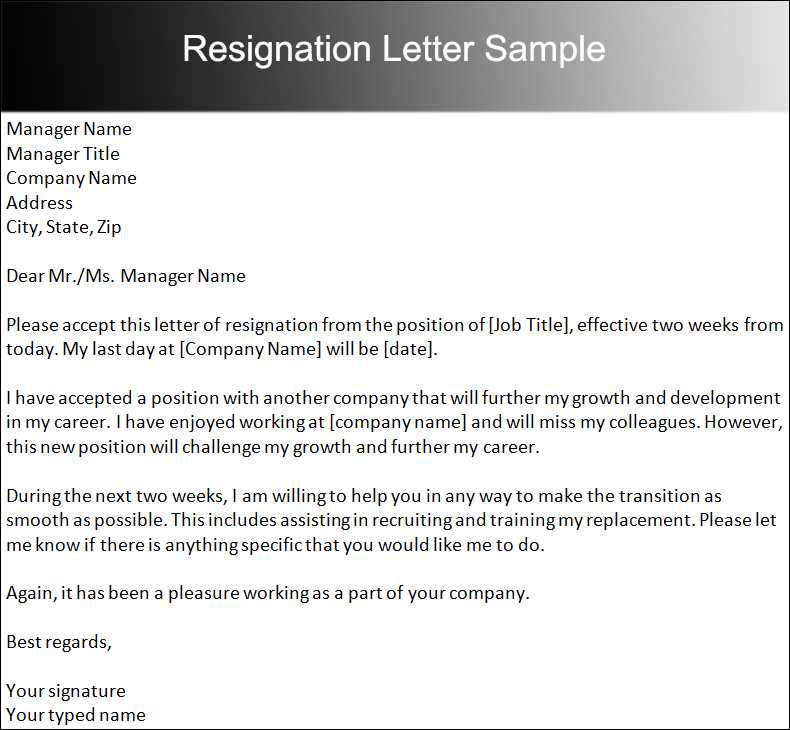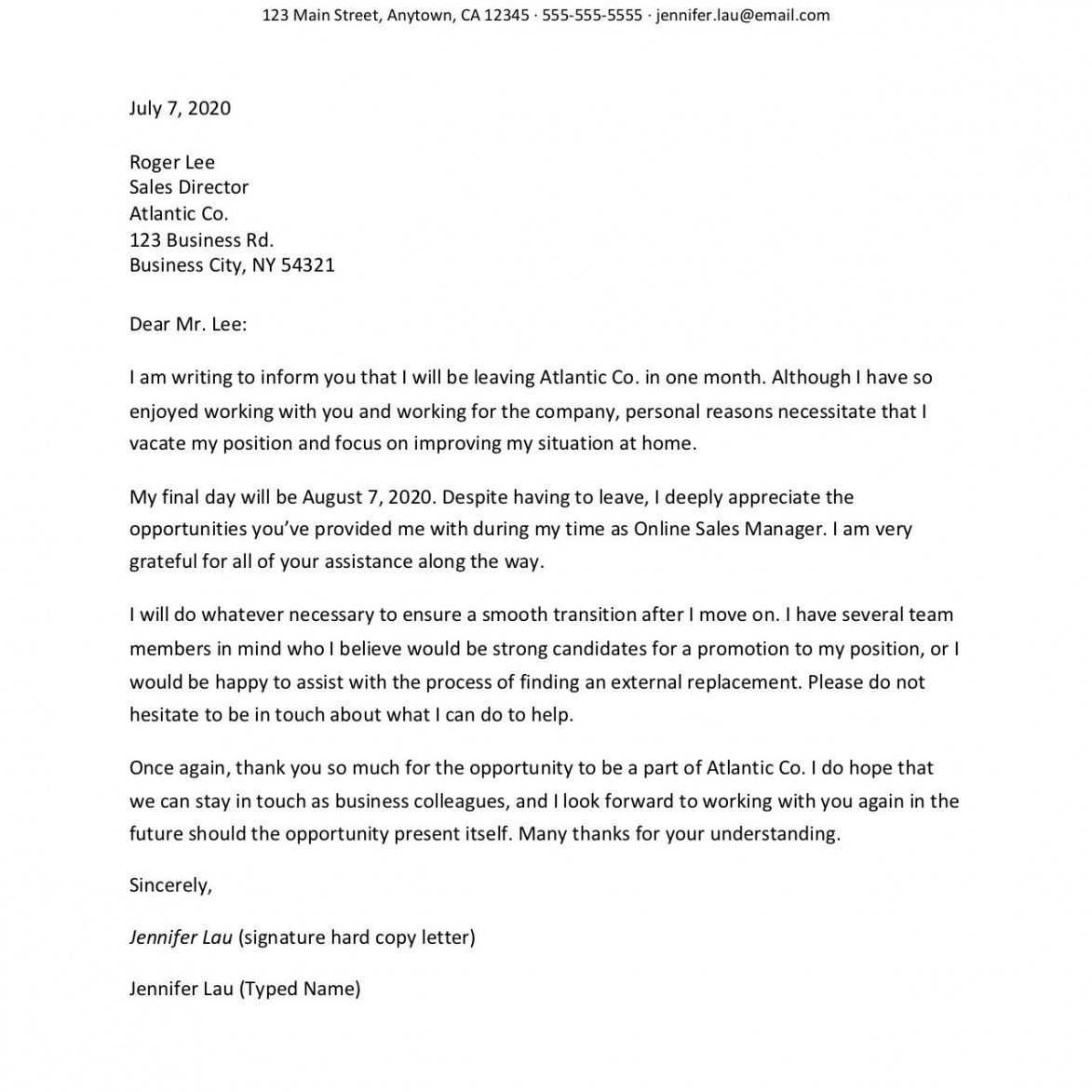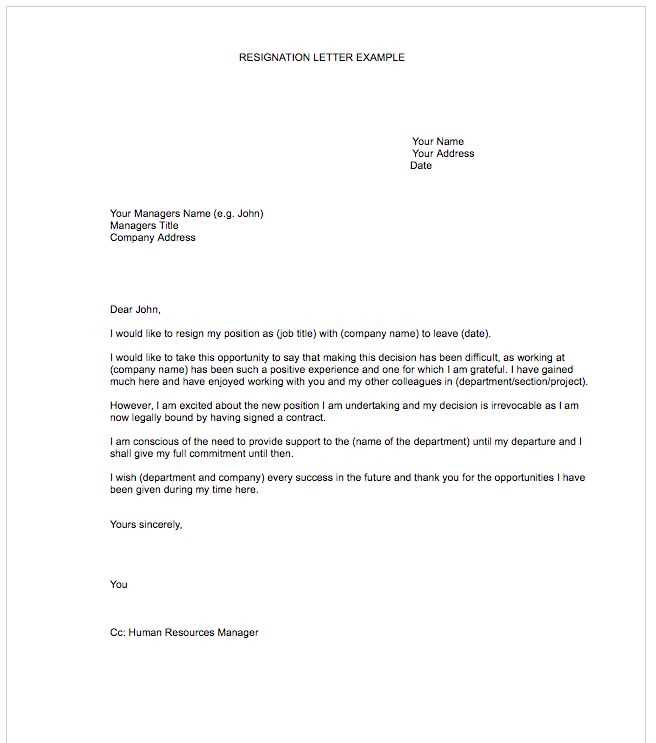Sample Letter of Resignation Template for Your Needs

Leaving a job can be a difficult decision, and expressing this decision clearly and professionally is essential for maintaining positive relationships. Crafting a formal document to inform your employer of your departure is a key step in the process. It allows you to leave on good terms while ensuring that all necessary information is communicated efficiently.
When preparing your exit communication, it’s important to strike the right tone. You want to convey gratitude and professionalism, even if your reasons for leaving are personal or complex. The proper format and language will help ensure that your departure is seen as respectful and organized.
Knowing the correct structure and wording can make a significant difference in how your message is received. This guide will help you understand what elements to include and how to write an exit notice that reflects your professionalism.
How to Write a Professional Resignation
When leaving your position, it is important to communicate your decision clearly and respectfully. Crafting a formal notice allows you to maintain professionalism and leave on good terms. This step is crucial in ensuring that your departure is smooth and well-received by your employer and colleagues.
Start by addressing the recipient with a courteous greeting, typically your immediate supervisor or manager. Keep the tone polite and direct. Clearly state your intention to move on from the role, offering sufficient notice as per company guidelines or your contract.
Explain your reasons for departing briefly, if you wish. However, it’s best to keep this section neutral and positive, focusing on the future rather than delving into any issues that led to your decision. This can help ensure that you maintain a good relationship with the company and colleagues.
Conclude by expressing gratitude for the opportunity to have worked with the team. You may want to offer your assistance during the transition period, showing your willingness to help make the process easier for everyone involved.
Key Points to Include in Your Letter

When drafting your formal notification of departure, it is essential to ensure that all necessary elements are included to maintain professionalism. This document should be clear, concise, and respectful, covering all critical aspects of your decision. The following points will help guide you in structuring an effective communication.
| Key Element | Details |
|---|---|
| Opening Statement | Clearly state your intent to leave, including the date of your departure. This sets the tone for the rest of the message. |
| Reason for Leaving | Provide a brief, neutral explanation for your decision. Avoid going into detail, focusing on the future instead of any issues. |
| Notice Period | Outline the length of your notice, making sure it aligns with company policy or your employment agreement. |
| Gratitude | Express appreciation for the opportunities and experiences gained during your time with the company. |
| Offer of Assistance | Optionally, offer to help with the transition process, such as training a replacement or providing support during the handover. |
Common Mistakes to Avoid When Resigning

Exiting a role requires careful consideration to ensure that the process is smooth and respectful. Many individuals make errors during this time that can leave a negative impression. Avoiding common pitfalls can help maintain professional relationships and ensure a positive conclusion to your time with the company.
Leaving Without Proper Notice

One of the most common errors is failing to give adequate notice. Depending on the company or your contract, you may be required to inform your employer several weeks in advance. Leaving abruptly can strain relationships and may hinder future job references.
Being Negative or Emotional
Expressing frustration or anger in your communication can lead to unnecessary tension. It’s important to remain neutral and polite, focusing on your future plans rather than any dissatisfaction with the current position. Keeping the message professional helps preserve your reputation in the workplace.